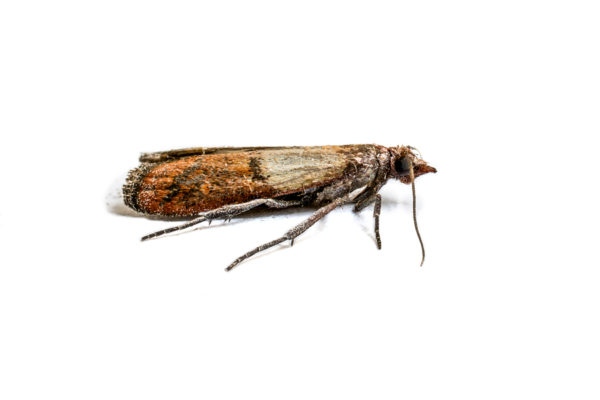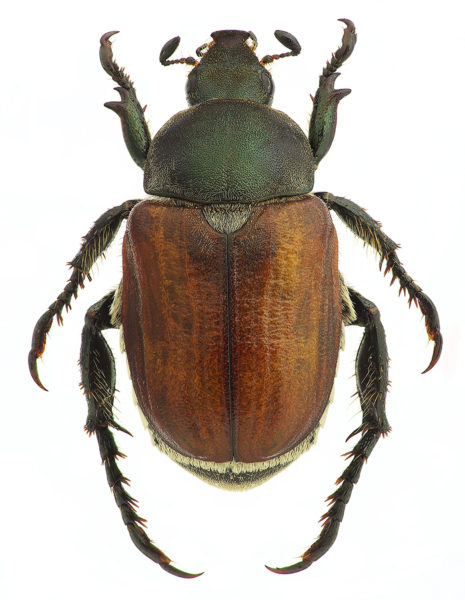READY TO GET STARTED?
REQUEST A FREE ESTIMATE
Fill out the form below or call (888) 466-7849 for a free, no-obligation estimate.

Many pests hibernate or “die off” during the winter, causing homeowners to feel like they can relax during the colder months. Overwintering pests, however, are here to rain on your parade. These pests seek refuge inside our homes looking for food, water, and a warm place to hide until the weather outside is more favorable. Here are 6 winter pests to watch out for along with tips to prevent them.

Ants will come in through the tiniest holes or cracks in the exterior of your home. They also like to sneak in on plants and flowers that are brought indoors. Ants are masters of overwintering, typically seeking out warm places deep in the soil or under rocks to hide out. Food can be scarce, though, and your home provides the perfect location for them to get everything they need to survive the winter – food, water, and warmth. The first step to ant control in your home is to get rid of their food source. Make sure food is well sealed and crumbs are cleaned up from floors and counters.

Beetles like to come indoors to get out of the cold. They are known to hide in the warmest areas of your home, such as near dryers or water heaters. Elm leaf beetles and click beetles are two of the most common overwintering beetles you may encounter. They are often brought inside on firewood. If you spot beetles inside, vacuum them up and immediately discard the bag or canister contents. Eliminate their food sources by keeping your kitchen and bathroom clean. Caulk windows or use weatherstripping around them. Keep wood piles and leaf litter away from your home. Inspect any wood before bringing it inside.

Silverfish prefer damp, cold places and will usually be found hanging out in your basement or bathroom. They are common in the winter months, often hitching a ride as you are hauling your holiday decorations in and out of your attic or garage. They feed on books, glue, wallpaper, and boxes. Keep silverfish under control by vacuuming often and decluttering your home. Get rid of any old newspapers, mail, and cardboard laying around. Inspect any boxes before bringing them inside. Store clothes in sealed bins, preferably made of plastic rather than cardboard.

Ladybugs will come inside through window cracks and openings to shelter from the cold. While they don’t bite, they will secrete a yellow fluid with an unpleasant odor that not only attracts other ladybugs, but can also leave an unsightly stain on your walls, floors, ceilings, and more. Control ladybugs by locating and sealing any entry points you can find. Vacuum them up or spray them with soapy water. The soapy water will not only get rid of the ladybugs, but it will also get rid of the smell, helping prevent other ladybugs from coming back.

Roaches come indoors during winter for heat and humidity as they cannot survive the cold temperatures outdoors. They are also attracted to plants, leaf litter and mulch. Cockroaches pose a serious health risk to humans as they are known to transmit diseases and trigger allergies and asthma. They will also hitch a ride inside on grocery bags, boxes, and used appliances. They prefer to hang out in kitchens and bathrooms. Keep roaches at bay by cleaning counters and floors and vacuuming frequently. Dispose of your garbage regularly. Keep kitchens and bathrooms clean, especially under appliances and cabinets.

Spiders seek out warm, dark places to hide during the winter, usually in your basement, attic, or rarely used corners of rooms. They will also hide out in boxes and rarely used clothes and shoes. Keep spiders under control this winter by decluttering your home. Dust, vacuum, and sweep out cobwebs frequently. Discard any old boxes and packages they can use to hide out in. Keep trees and shrubs trimmed away from your home and cut back overhanging limbs from the roof. Store clothes and shoes in plastic containers.
No one wants to deal with pests inside their home regardless of what season it is. If you have a problem with pests at any time during the year, contact your local pest control company who can help identify the type of pest you have, identify entry points, and set up a treatment and prevention plan going forward.
Does My Crawlspace Need A Moisture Barrier?
What Every Homeowner Should Know About DIY Pest Control

It’s the end of the year and as you put together your list of New Year’s resolutions, some simple home repairs might need to make the cut. What you may not realize is that pests could have been quietly chipping away at your home’s value throughout the year. Here are some things to look for and steps to take to preserve the integrity of your home.
Making these adjustments can help you enjoy your home without the pests and the critters. Reach out to your local pest control company to schedule an inspection and to work out a preventative treatment plan to help keep your home safe.

We’ve all been there. You start cooking and open up the bag of flour only to find a bug staring back at you! Yuck! Stored product pests include both storage and pantry pests and fabric pests. Pantry pests are most commonly found in kitchens and food storage areas. Fabric pests are most commonly found in closets and rooms with a source of fiber, fur, or leather. These pests are often not spotted until they leave their food source to crawl or fly around your home. So what kind of pests are these and what can you do to prevent them? Check out these common storage and pantry pests and our 12 tips to prevent them.

Indian meal moths are one of the most common stored food pests. They are commonly identified by their two toned wing pattern with tan and copper colors. They have a 1/2″ to 5/8″ wingspan. Indian meal moths feed on dried fruits, nuts, chocolate, powdered milk, birdseed, dog food and grains. These moths are most often spotted on ceilings, walls, and countertops. Indian meal moths are usually controlled by removing the infested source of food.

Clothes moths are one of the most common fabric pests. Clothes moths are smaller in size then Indian meal moths. They are identified by their shiny golden scales. Clothes moths are very secretive in nature and are primarily nocturnal. They feed on protein based fibers like wool cloth, carpets, furs, pet hair, piano felts, and natural hair brushes. Infested fabrics can be treated with dry cleaning but this doesn’t prevent reinfestation. Dry cleaned items should be stored in either cold storage or sealed in airtight containers with fresh cedar chips.

There are several types of beetles that feed on stored food and pantry items. Some of these include weevils, cigarette beetles, , saw toothed grain beetles, larder beetles, mealworms, and flour beetles. These beetles feed on a variety of stored grains, fruits, spices, powdered milk, dried meat, and dead insects. Beetles can be controlled by finding their food source eliminating it. Once eliminated, all non-infested food supplies should be stored in air-tight containers.

Carpet beetles are the most common fabric pest beetle species. They are small and round with black or mottled wings. Carpet beetles are often mistaken for bedbugs. These beetles will feed on any source of animal protein, fabrics, carpets, and even mounted animal trophies. Carpet beetles can be controlled by inspecting your furs, wool, feathers, silks, and carpets for their presence and treating with heat or cold.

Pollination is when pollen grains are transferred from one flower to another. Pollination allows plants to produce seeds which is how they reproduce. Pollinators are animals and insects that are responsible for helping with the pollination of over 80% of the world’s flowering plants. Animal pollinators are vital in the reproduction of flowering plants and the production of most fruits and vegetables. They accomplish this by getting their food from flowers (think nectar and pollen) and collecting pollen on their bodies in the process. They then move on to another plant and leave the hitchhiking pollen behind, providing the new plants with the pollen they need to reproduce.
Some of the most common animal pollinators that come to mind are bees and butterflies. But did you know there are several other animals you might not have known who are expert pollinators? Here are a few animal pollinators along with the types of plants they pollinate:
Ants love nectar. Because they don’t fly they have to crawl into flowers to get to this nectar. Once inside the flower, pollen sticks to their bodies, allowing them to transfer it to other flowers when they move on. Tropical plants have nectar outside their flowers to attract ants to them. They then use these ants as “protectors” from other insects.
Ants pollinate flowers that:
Bats are known as one of the “night shift” pollinators. They are most common in tropical and desert climates. They are prevalent in the southwest US, Africa, Southeast Asia, and the Pacific Islands as pollinators. In fact, mangoes, bananas, and guavas depend on bats for pollination. In the US and Central America, the agave plant (which is used to make tequila) and the Saguaro cactus are also dependent on bats for pollination.
Bats pollinate flowers that:
Bees are known as the “champion” pollinators and are also the most common. There are over 4000 species of bees in the United States alone. Bees purposefully visit flowers to collect pollen and nectar which they use to feed themselves and their young. Many flowers that bees pollinate have an area of low UV reflection near their centers. Humans can’t see UV reflection so we don’t notice them. Bees, however, use them as a target to guide them to the center of the flower.


Human Perspective Bee Perspective
Photos courtesy of Apalachicola National Forest.
Bees pollinate flowers that:
Beetles were among the first insects to visit flowers. They are important pollinators for ancient species like magnolias. They are known as “mess and soil” pollinators because they eat through flower petals to get to the nectar and then defecate inside the flowers. Fossil records show that beetles were abundant as far back as 200 million years ago.
Beetles pollinate flowers that:
Birds are important pollinators of wildflowers. Hummingbirds are the most important bird pollinators in the United States. In the eastern United States there is only one species that acts as a pollinator and that is the ruby throated hummingbird. Hummingbirds have good eyesight and are extremely attracted to red flowers. They use their long bills to collect nectar and the pollen then dusts their heads and faces.
Hummingbirds pollinate flowers that:
Butterflies are very active during the day. Their body structure doesn’t allow them to pick up as much pollen as bees and other insects but they can see red where bees can’t. Butterflies produce scents that attract other butterflies of the opposite sex. This scent they produce smells like the flowers that they are attracted to.
Butterflies pollinate flowers that:
Two winged pollinators include flies, gnats, and mosquitoes. These insects aren’t as fuzzy as bees so they don’t pick up as much pollen. They are still, however, important pollinators, especially for some species of orchids.
Two-winged insects pollinate flowers that:
Moths are the other member of the pollination “night shift” along with bats. Some moths are also active as pollinators during the day. The yucca plant is one important plant that is dependent on moths for survival.
Moths pollinate flowers that:
Wasps look like bees but have much less hair. This makes them less efficient as pollinators because pollen is less likely to stick to their bodies. Wasps need pollen and nectar for energy. Fig wasps are responsible for pollinating almost 1000 species of figs.
Wasps pollinate flowers that:
There are several other uncommon pollinators. Lizards, geckos, and skinks can be pollinators. They climb inside flowers to drink the nectar and the pollen then sticks to their scales. Lemurs and possums can also pollinate. They use their snouts and tongues to get nectar from plants and then have their faces and snouts dusted with pollen.
We consider most of the animals and insects that are pollinators as nuisances and pests. As much as we don’t want them in our homes, they do play a very critical role in the survival of plants and food. It is important that while we should take steps to prevent them from invading our homes, we should be very careful with how we handle them should they make themselves at home in our area. If you suspect you have a problem with any of these pollinators, contact a professional pest control company who can give you a thorough evaluation and provide you with a treatment plan that both benefits you and protects these important species.


You may be noticing the bees buzzing more than they were a few weeks ago. Why? (Hint: it’s not to ruin your outdoor fun or to sting you) Some species of bees, like honeybees for example, are preparing for winter by collecting nutrients for their colony via late-blooming flowers. Wasps can also be more active (or noticeable) this time of year, when they change up their usual diet of insects for sweeter, more carbohydrate-rich foods. Since bees are beneficial insects, the best way to prevent stings is by avoiding them. If you have an unusual amount of bee activity around your home, contact a wildlife removal company for recommendations.

Cockroaches may start moving indoors when the weather gets cooler in search of food, water, and warmth. The best way to prevent an infestation in your home is with proactive roach control: eliminate or reduce food and water sources and get rid of hiding places by de-cluttering and keeping a clean house. Fix any plumbing leaks, store leftover food and dog food in storage containers, take out the trash daily, and seal or correct any gaps, cracks, or crevices that roaches can use to gain access into your home. If you’re seeing several roaches of varying sizes, you may have a roach infestation. Resist the urge to use OTC sprays as these are only on-contact killers and won’t prevent roaches from reproducing. Contact an exterminator for a pest control plan that will include a thorough inspection and quarterly or monthly treatments.

You may notice an influx of varying kinds of beetles in the Fall months as these overwintering pests are preparing for hibernation. Common fall beetles include ladybugs, boxelder bugs, and stink bugs. These types of pests often resist traditional treatments with pesticides so it’s best to vacuum up the ones you see inside your home and take measures around your home to prevent more from coming inside. They’ll gather near the warmest areas of your home, usually on the south and west-facing sides. Especially around these areas, check to be sure there aren’t any openings or gaps around windows and doors and, if there are, correct these issues to keep beetles out.

Like other rodents and pests, mice are searching for food and warmth in cooler weather, making your home a welcoming environment. Keep them out by rodent-proofing: seal gaps or openings around your home’s exterior and around plumbing, make sure outdoor vents are covered, repair any holes or tears in window screens or door screens, install weatherstripping around doors, clear out plants, leaves or any other vegetation that may be touching or near your home’s exterior, clean up any yard debris, and de-clutter inside the house. You can also use glue boards in less-traveled areas, like basements and attics, as a proactive approach to mice control.

Knocking down cobwebs only to find another one in it’s place the next day? You’re not alone. For some species of garden spiders, like the orb weaver, now is when they are at their largest, making them more noticeable, and females are laying eggs before they die. Since spiders are beneficial insects and can reduce the amount of other pests around your home, try and resist the urge to knock down their webs outside. If you’re seeing spiders in the house, contact an exterminator for pest control recommendations.